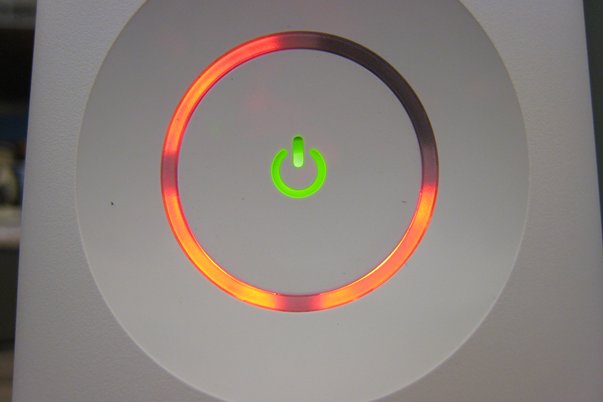Ring of death
Read why the Xbox 360 keeps breaking
The Xbox 360 has a DVD-ROM drive that roars like a vacuum cleaner, guts that get hotter than the sun and a failure rate high enough to tempt every games site to write epics about it. That's because the Xbox 360 is constructed entirely from spit and hair by blind widows atop a mountain in the Alps.
Okay, that's not true, but the 360 does have a severe case of The Woes. Only recently has Microsoft attempted torectify the problem by dumping $1 billion in pre-tax charges for a three-year warranty upgrade and by retroactively paying the consumer back for previous shipping charges. Faced with a wall of silence on the Bill Gates end of things, we've decided to reveal the answers...
Is the 360 a crappy piece of tech?
Lots of things break, but there's a world of difference between appliances that suffer the occasional fault and ones that break as a matter of routine. Visit any internet forum and you'll find threads running into dozens of pages, full of 360 users who are already on their second or third Xbox. Complaints range from frequent "Dirty Disc" errors to scratched discs, but the most frequent and inexplicable problem is the infamous red ring of death that requires a return to Microsoft for the console. It looks like this: three red circles on the ring of light, flashing ominously.

So what causes the red ring of death?
Microsoft's explanation goes no further than to say that three red lights on the ring of light means there's been a total hardware failure that can't be fixed by the user. We're sure there are lots of other potential ways to get three red lights - a bad system update or dropping it down the stairs, for instance.
Sign up to the GamesRadar+ Newsletter
Weekly digests, tales from the communities you love, and more
But console modders claim to have identified the most common cause of the hardware failure which results in the inexplicable and sudden red ring of death, and it's this: a critical fault related to the connections between the console's Main Processor and its Graphics Processor, and the 360's motherboard.
Inside the case, the Xbox's motherboard is attached to the case by its edges rather than being properly pinned in the center, allowing it to flex and warp as the temperature inside increases. This, combined with the way the already inadequate heatsinks - big metal grills that dissipate heat from the chips - are attached to the board places stress on the corners and edges of the CPU and GPU, which gradually lifts the chips from their mounts, leaving you with a bunch of broken contacts and three red lights.
Modders have found that by altering the way the heatsinks are attached to the motherboard, they can almost guarantee a permanently red-ring-free console at the cost of invalidating their warranty. The success rate of the modification has been very high, both in ensuring consoles don't fail, and in repairing machines that have already given up and died. We can't really recommend doing this, however, because it would totally screw the brand-new extended warranty.


